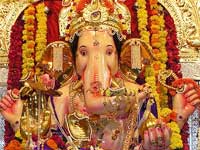Just In
- 2 hrs ago

- 5 hrs ago

- 6 hrs ago

- 11 hrs ago

Don't Miss
- Finance
 Stock Market Live Updates:Nifty Forecast to Lose Each Week; Infosys's ADR Dips 2.6% Over Night
Stock Market Live Updates:Nifty Forecast to Lose Each Week; Infosys's ADR Dips 2.6% Over Night - Movies
 Bade Miyan Chote Miyan Box Office Day 9 Prediction: Akshay’s Film To Cross 51Cr Ahead Of 2nd Weekend
Bade Miyan Chote Miyan Box Office Day 9 Prediction: Akshay’s Film To Cross 51Cr Ahead Of 2nd Weekend - Sports
 LSG vs CSK IPL 2024: Four Batters Who Can Score Most Runs in Match 34
LSG vs CSK IPL 2024: Four Batters Who Can Score Most Runs in Match 34 - News
 12 Jurors Picked For Donald Trump’s Hush Money Trial, Alternate Selection Continues
12 Jurors Picked For Donald Trump’s Hush Money Trial, Alternate Selection Continues - Automobiles
 Aprilia RS 457 Accessories: A Detailed Look At The Prices
Aprilia RS 457 Accessories: A Detailed Look At The Prices - Education
 Karnataka SSLC Result 2024 Soon, Know How to Check Through Website, SMS and Digilocker
Karnataka SSLC Result 2024 Soon, Know How to Check Through Website, SMS and Digilocker - Technology
 Nothing Ear, Ear a With ANC, Up to 42.5 Hours of Battery Launched; Check Price and Availability
Nothing Ear, Ear a With ANC, Up to 42.5 Hours of Battery Launched; Check Price and Availability - Travel
Telangana's Waterfall: A Serene Escape Into Nature's Marvels
Sri Ganapati-Vinayaka-Part I

Ganapati is said to have two spouses, Buddhi (Intellect) and Siddhi (Achievement). Thus He is the Master of Knowledge and Achievement.
In this characterisation Sri Ganapati represents a possessor of Perfect Wisdom, and a Fully - Realised Vedantin. Westerners are shocked to notice that Hindus revere a divine form which to them seems quite absurd. But the Elephant-Headed Lord indeed represents the highest and the best that have ever been given in our Scriptures. To a Vedantic student, since his "path of Knowledge" is essentially intellectual, he must have a great head to conceive and understand the logic of Vedantic thought and, in fact, the truth of Vedanta can be comprehended only through listening to a teacher and, therefore, 'Sravana' (listening) is the initial stage to be mastered by the new initiate.
Therefore, Sri Ganapati has large ears representing continuous and intelligent listening to the Teacher.
After "listening" (Sravana) to the truths of the Upanishads, the Vedantic student must independently "reflect" (Manana) upon what he has heard, for which he needs a sensitive intelligence with ample sympathy to discover in himself sufficient accommodation for all living creatures in the universe.
His intellect must have such depth and width in order to embrace in his vision the entire world of plurality. Not only must he, in his visualisation, embrace the whole cosmos, but he must have the subtle discriminative power(Viveka) in him to distinguish the changing, perishable, matter-vestures from the Eternal, Immutable, All-Pervading Consciousness, the Spirit. This discrimination is possible only when the intellect of the student has consciously cultivated this power to a large degree of perfection.
The trunk, coming down the forehead of the elephant-face, has a peculiar efficiency and beats all achievements of man and his ingenuity in the mechanical and scientific world. Here is a "tool" which can at once uproot a tree or pick up a pin from the ground. The elephant can lift and pull heavy weights with his trunk and, at the same time, it is so sensitive at its tip that the same instrument can be employed by the elephant to pluck a blade of grass. The mechanical instruments cannot have this range of adaptability. The spanner that is used for tightening the bolts of a gigantic wheel cannot be used to repair a lady's watch.
Like the elephant's trunk, the discriminative faculty of an evolved intellect should be perfect so that it can use its discrimination fully in the outer world for resolving gross problems and, at the same time, efficiently employ its discrimination in the subtle realms of the inner personality layers.
The discriminative power in us can function only where there are two factors to discriminate between; these two factors are represented by the tusks of the elephant as the trunk is between them. Between good and evil, right and wrong, and all other dualities must we discriminate and come to our own judgement and conclusions in life, Sri Vinayaka is represented as having lost one of His tusk in a quarrel with Parasurama, a great disciple of Lord Shiva. This broken tusk indicates that a real Vedantic student of subjective experience is one who has gone beyond the pairs -of -opposites (dwandwaatita).
To be continued
-
 thoughtThe Transient Life
thoughtThe Transient Life -
 swami chinmayanandaGratitude To God
swami chinmayanandaGratitude To God -
 swami chinmayanandaTo Achieve Success Perfect Your Present Actions
swami chinmayanandaTo Achieve Success Perfect Your Present Actions -
 swami chinmayanandaVanaprastha Ashram For Ageing Gracefully
swami chinmayanandaVanaprastha Ashram For Ageing Gracefully -
 faith mysticismDattaguru Reveals 24 Spiritual Teachers-22 to 24
faith mysticismDattaguru Reveals 24 Spiritual Teachers-22 to 24 -
 faith mysticismDattaguru Reveals 24 Spiritual Teachers-16-21
faith mysticismDattaguru Reveals 24 Spiritual Teachers-16-21 -
 faith mysticismDattaguru Reveals 24 Spiritual Teachers-11 to 15
faith mysticismDattaguru Reveals 24 Spiritual Teachers-11 to 15 -
 faith mysticismDattaguru Reveals 24 Spiritual Teachers-II
faith mysticismDattaguru Reveals 24 Spiritual Teachers-II -
 swami chinmayanandaSwami Chinmayananda-Dynamics of Togetherness
swami chinmayanandaSwami Chinmayananda-Dynamics of Togetherness -
 swami chinmayanandaTransformation Story-Meditation Transforms
swami chinmayanandaTransformation Story-Meditation Transforms -
 swami chinmayanandaSilent Mind Reveals The Brahman
swami chinmayanandaSilent Mind Reveals The Brahman -
 swami chinmayanandaSwami Chinmayananda-The Legacy
swami chinmayanandaSwami Chinmayananda-The Legacy


 Click it and Unblock the Notifications
Click it and Unblock the Notifications



